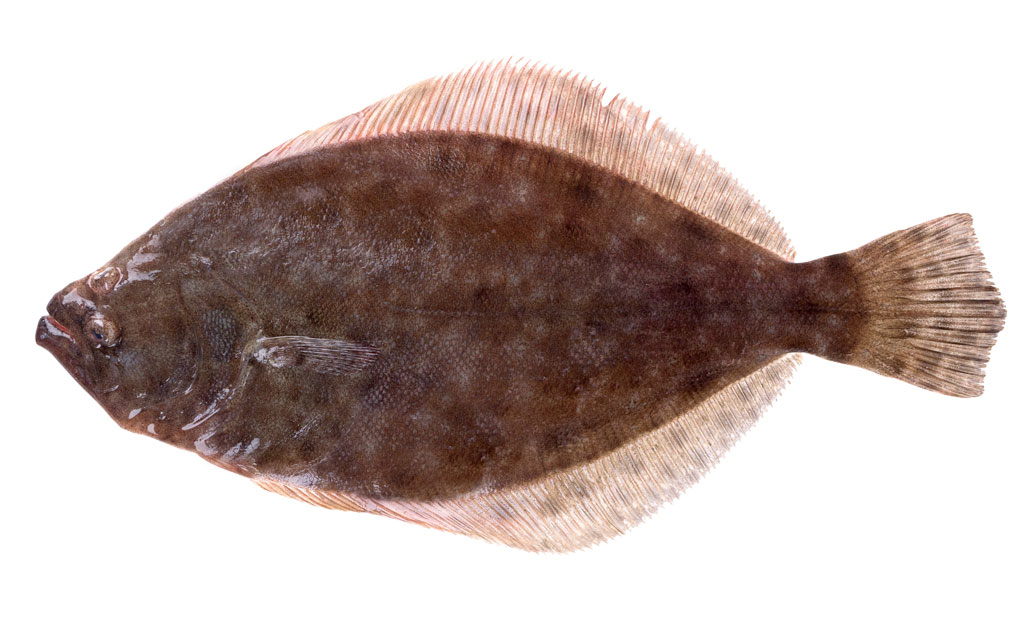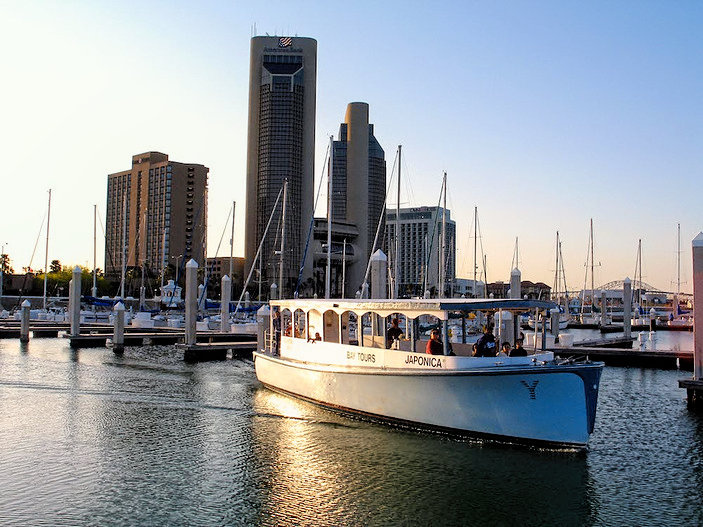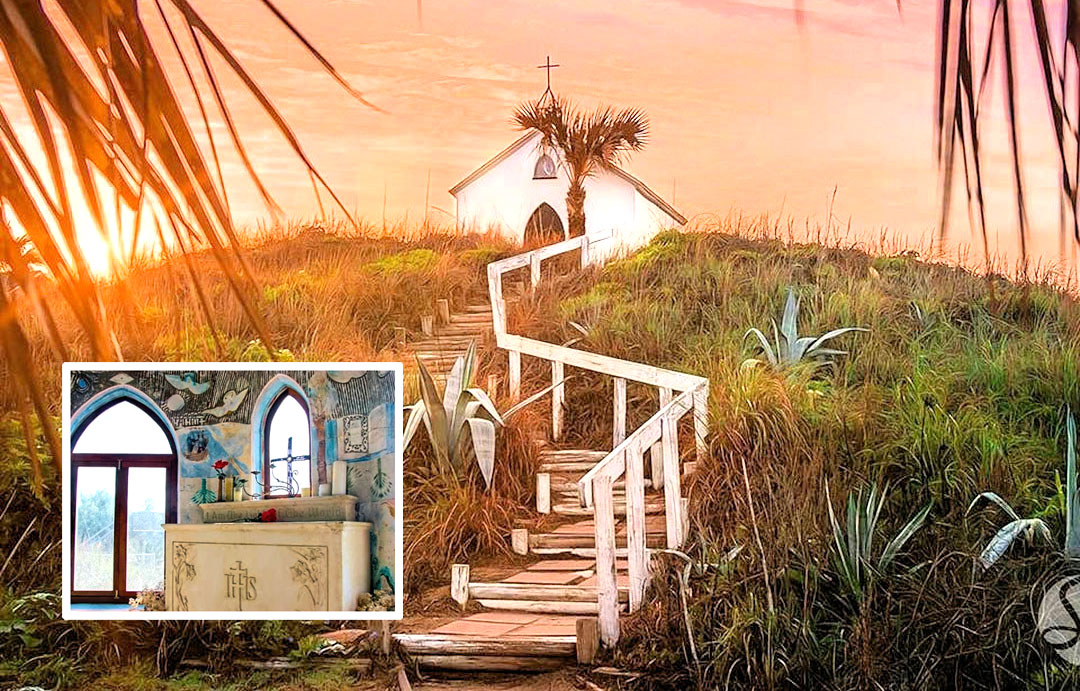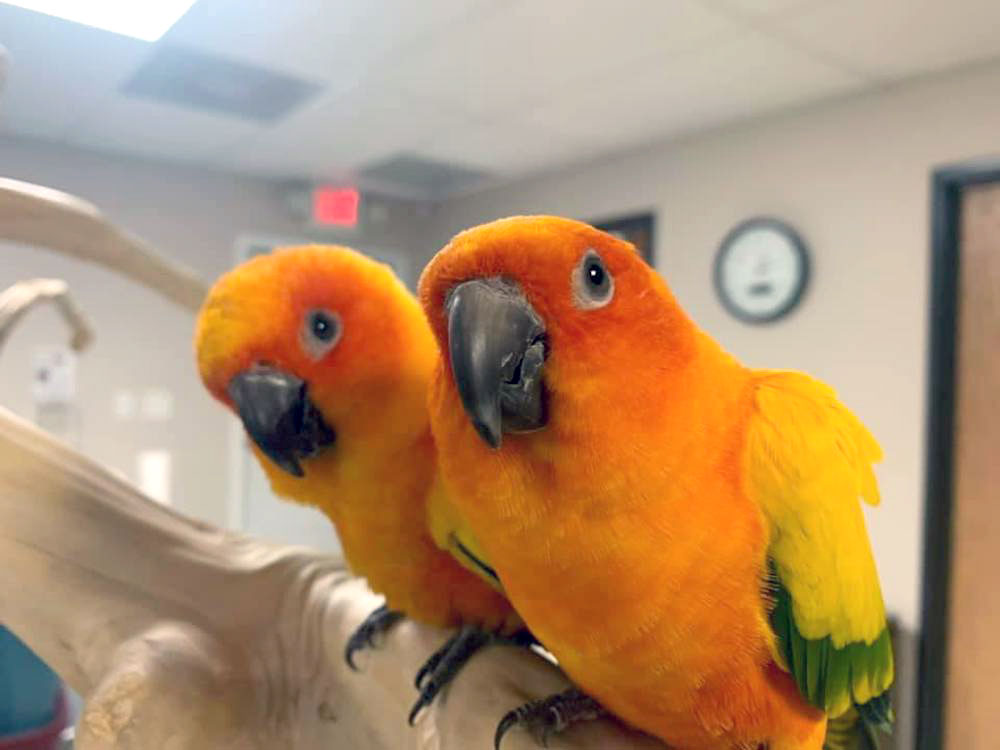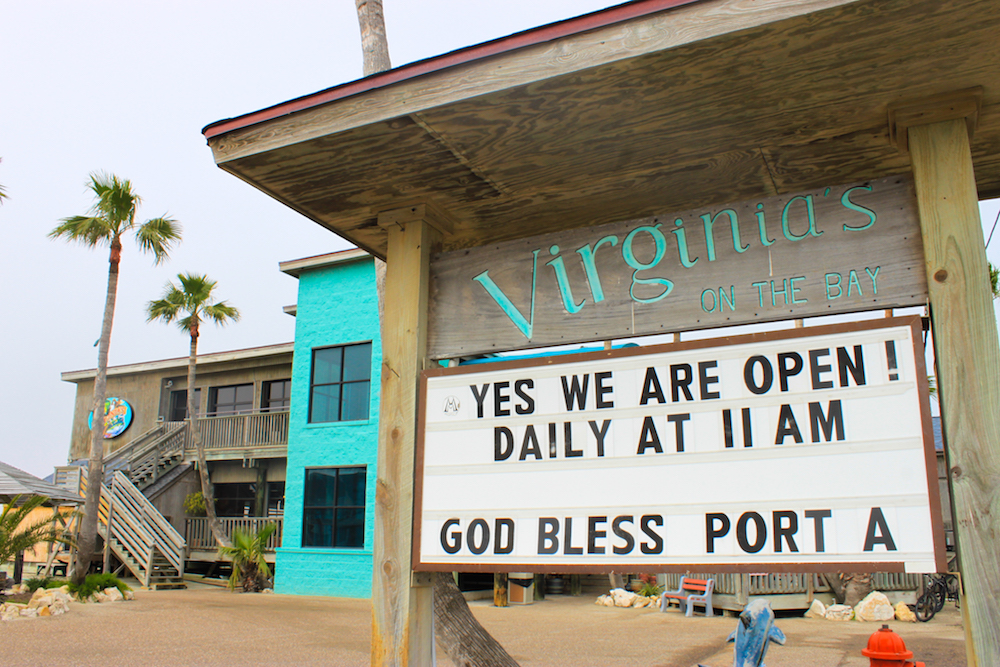
Virginia’s on the Bay was among the first restaurants to reopen in Port Aransas after the devastation of Hurricane Harvey last August. Staff photo by JoAnna Kopp
When you drive down Texas 361 into Port Aransas, there’s a lot to look at. You’ll see piles of debris beside the road; a gas station torn down by heavy winds; houses collapsing into sink holes. You’ll also see the community in a frenzy of reconstruction, working to rebuild in time for tourist season.
The town’s resilience and determination is made clear on the first billboard you pass before reaching the city limits. “Dear Harvey, Hurricanes come and go, we stay here,” it declares. Throughout town you can hear saws whirring and hammers banging. The Texas Department of Transportation’s orange cones and reflector-vested highway workers are everywhere.
In the ruins of Hurricane Harvey’s Category 4 winds and storm surge, businesses are being renovated or completely rebuilt, all along the main arteries through the popular tourist destination. Family-run restaurants are open for business, and the tables are packed for lunch and dinner, mainly because of all the workers in town.
With the destruction of Hurricane Harvey on Aug. 25, 2017 — barely six months ago — one might expect the city to be more devastated. Port Aransas was hit hard by the hurricane, but now the city is bouncing back better than it was before.
“From what we took, we were upside down,” said Jeffrey Hentz, president of the Port Aransas Chamber of Commerce and Tourist Bureau. “For the next year, there will still be scars from Harvey, but those scars will fade over time.”
Port Aransas is held up by its tourism economy. The small town of 3,500 residents sees 5 million tourists a year, bringing in $400 million in revenue.
“The size of our economy is so large, for a community this small,” Hentz said. “We should only have one gas station, a stop sign and three restaurants. Instead, we have more than six gas stations and sixty-two restaurants, and we fill those restaurants up with a two- to three-hour wait time during the peak season. We’re a large destination in one of the smallest towns in America.”
Post-Harvey, however, the city has only two gas stations open and a handful of restaurants that have been restored. Port Aransas normally has about 4,000 rooms for tourists, but that number has dropped as low as 800, and almost all are filled with residents whose homes were destroyed and the contractors working overtime to rebuild them.
Despite the lack of lodging, the chamber is leading an initiative to bring tourists back to Port Aransas this season, pushing against the stigma of a town torn apart by the storm. Working alongside the national marketing firm Unique HR, the initiative presses that “Port Aransas is open for fun.”
With ads in both digital and traditional publishing and a strong social media presence, Hentz is working to tell people that Port Aransas is still a prime vacation destination with its beaches in phenomenal shape.
The Port Aransas Chamber of Commerce and Tourist Bureau recently invested in a 40-foot RV to travel across Texas and neighboring states as a visitors center on wheels. Wrapped with images of beach fun, the RV will become a major visual at big events, doing the work of 200 billboards a day.
The pop-up traveling visitors center is tasked with bringing in the tourist trade needed to fund a quick turnaround in Port A. The average estimate for recovery is five years or longer for other destinations similarly impacted by storms over the past 10 years, Hentz learned, after making calls to his counterparts along the entire Gulf Coast.
“I try not to subscribe to that theory,” Hentz said. “I’m very bullish that we’re going to speed up that process just based on the way that our community is built. We’re internal. We have a lot of mom-and-pop businesses, which gives them the ability to make decisions on their own without having to go to corporate America or franchise institutions to ask for favors or approvals.”
By June, Hentz hopes to have up to 70 percent of the city’s lodging open and ready for tourists, which means moving residents and contractors into long-term rental homes. Pamilla Beach and Cinnamon Shores, the city’s two major residential properties, are spending billions to expand with resorts, vacation homes, retail centers, golf courses and more. Local land is for sale and developers are jumping on opportunities in the community to bring in retail and new hotels, which means new jobs and more tourists.
“It’s very invigorating to see the community pull together,” Hentz said. “This town is a monster tourism machine.”

